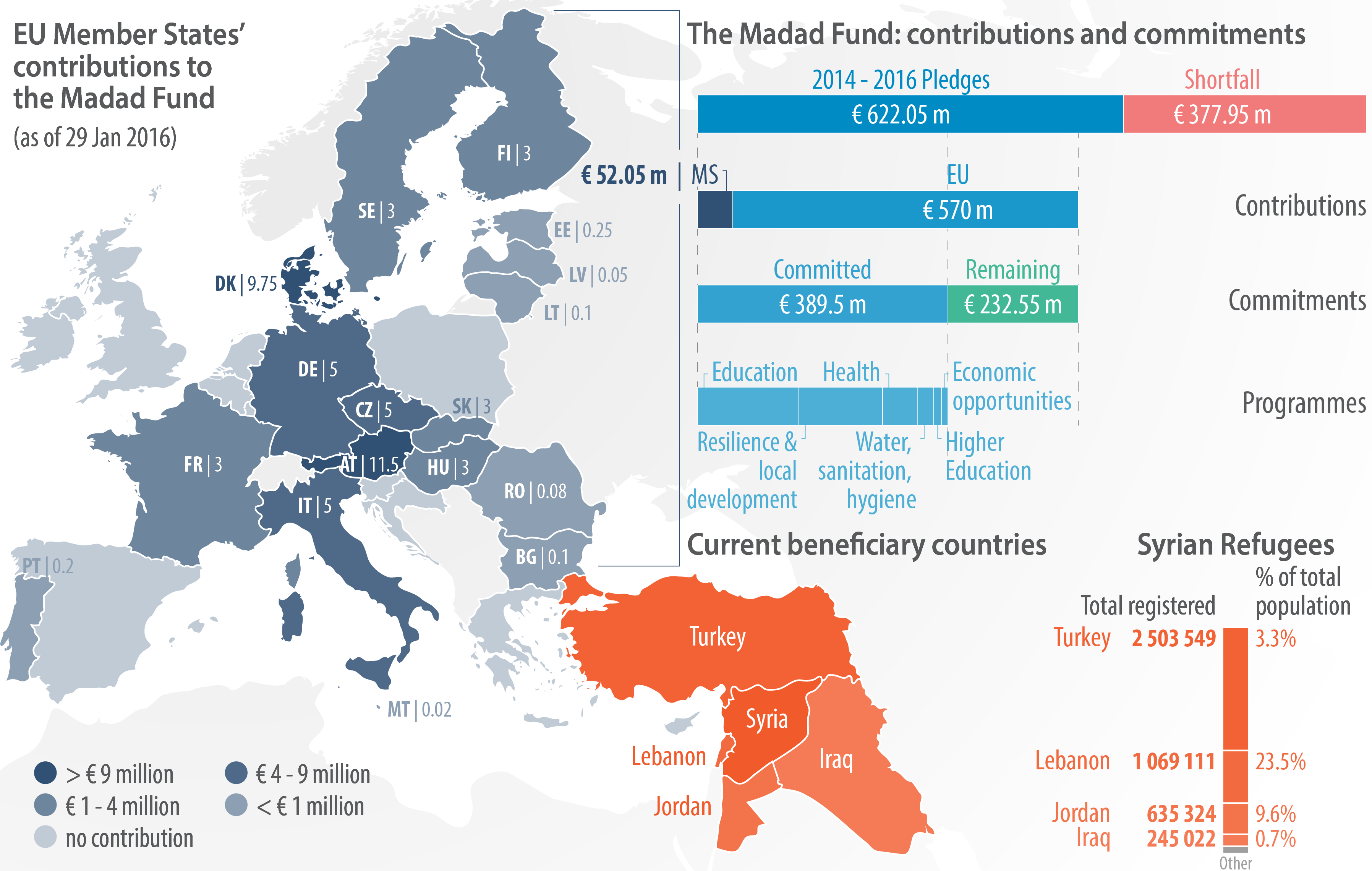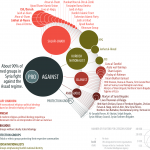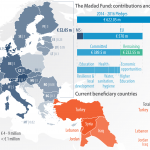Written by Patryk Pawlak,
The total humanitarian, development, economic and stabilisation assistance provided by the EU and its Member States to Syrians and Syrian refugees since the beginning of the conflict amounts to over €4.4 billion. Following amendments to the EU budget last year, the total EU response in 2015 and 2016 will reach a total of almost €10 billion. That means that every EU citizen spends about one cent a day in support of a better future of Syria and the Syrian people.
How did it all begin?

The conflict in Syria has its roots in structural and economic problems that were already widespread in Syria in the early 2000s. Prior to the violent uprising of 2011, the countries of the greater Fertile Crescent experienced one of the most severe droughts in history. According to the United Nations Response Plan, by 2009, some 1.3 million inhabitants of eastern Syria had been affected by this disaster, with 803 000 persons having lost almost their entire livelihoods and facing extreme hardship. Between 2006 and 2009 the income of over 75 641 affected households decreased by 90% and their assets and livelihoods were severely compromised, resulting in large-scale migration out of the affected areas to urban areas (figures range from 40 000 to 60 000 families). At the time, the international community was slow to respond to the appeals of major donor organisations: according to the UN Office for the Coordination of Humanitarian Assistance, as of June 2010, only 33% of the required assistance had been provided. A report by the National Academy of Sciences of the United States suggests that a mass migration of farming families to urban centres and growing inequalities eventually contributed to the political unrest.
Where do we stand?
Since the beginning of the fighting in Syria in 2011, the conflict has forced over 4.3 million Syrians to flee the country and seek refuge across the region – primarily in Turkey, Egypt, Jordan, Iraq and Lebanon. Another 6.6 million people have been internally displaced. About 394 000 people live deprived of food and basic products in besieged areas in Syria. On 18 December 2015, the UN Security Council adopted Resolution 2254 – the first UN resolution laying out a possible political solution to the conflict in Syria, as Russia and China have vetoed four other UN Security Council resolutions on Syria since 2011. The resolution – mirroring in many aspects the agreement of 14 November 2015 reached by the 17-nation strong International Syria Support Group – includes a clear timeline towards peace in Syria: UN-mediated political talks to start in January 2016, followed by a national ceasefire, and a Syrian political transition (including UN-administered elections) before July 2017. But such a tight timeline might be very difficult to maintain.
The declared aim of fighting ISIL/Da’esh has prompted the involvement of several external actors. The United States mounted a 65-nation global coalition in September 2014 – with 22 coalition members currently engaged in the military operation ‘Inherent Resolve’. The ‘Train and Equip Program’ for Syrian soldiers to counter ISIL/Da’esh, launched in parallel to the aerial operation, brought limited results and has since been discontinued. Following the terrorist attacks in Paris in November 2015; France, the United Kingdom and Germany expanded military operations in Syria. For the first time in history, France also invoked the mutual defence clause enshrined in Article 42(7) of the Lisbon Treaty, requesting all EU partners to assist France in fighting ISIL/Da’esh. Russia’s involvement in fighting ISIL/Da’esh – in addition to supporting the government in Damascus – intensified in November 2015 following the terrorist attack on a Russian aeroplane in Egypt. Iran initially denied any military engagement, claiming that its involvement was in a purely ‘advisory’ capacity. However, numerous media reports suggest that at least 57 members of Iran’s Revolutionary Guard Corps have been killed in Syria. Turkey’s involvement has also grown – including through direct military action and opening Turkish airspace and bases to coalition forces.
What role for the European Parliament?

Throughout 2015, the European Parliament was closely involved in the implementation of the legislative package proposed by the European Commission under the umbrella of the European Agenda on Migration. The European Parliament’s approach was laid down in its resolution of 10 September 2015 on migration and refugees in Europe. After having approved the first temporary emergency rules for relocating an initial 40 000 refugees from Italy and Greece, on 17 September 2015 the European Parliament backed the Commission’s new proposal to relocate an additional 120 000 asylum-seekers from Italy, Greece and Hungary.
As co-legislator, the Parliament is expected to take a position on the proposal for a regulation concerning a European list of safe countries of origin and monitor progress on the implementation of the hotspots in Greece and Italy. The European Parliament has also adopted a series of resolutions concerning humanitarian needs in Syria, in particular the situation in Palmyra and the Yarmouk refugee camp. In November 2015, the EP adopted a resolution on prevention of radicalisation and recruitment of European citizens by terrorist organisations, in which it stresses the vital importance of the EU establishing close cooperation with third countries, in particular with regard to strengthening links between internal and external security in the EU, promoting the exchange of good practices on deradicalisation, and dismantling terrorist networks.
What will happen next?
Political talks between the opposition groups and the Syrian government – planned for the beginning of January 2016 – have been already postponed to 25 January, and further delays are possible given the scope of unresolved issues, such as: finding a realistic middle ground between the pro- and anti-Assad camps; reconciling divergent positions of pro-government forces and hundreds of anti-government groups on a wide variety of issues; and establishing a list of the groups that will be allowed to participate in the political transition process.
With regard to the humanitarian situation in Syria, the donors’ conference – a follow up to previous pledging conferences organised by Kuwait – is scheduled for 4 February 2016 in London and will be hosted by the United Kingdom, Germany, Norway, Kuwait and the UN. According to a socioeconomic and damage assessment report by the UN Relief and Works Agency (UNRWA), even if the conflict ceased today and GDP grew at an average rate of 5% each year, it would take the Syrian economy an estimated 30 years to return to the economic level of 2010. As the EU enters the final stage of its period of reflection on a Global Security Strategy, the tools and instruments needed to build more resilient societies, strengthen crisis management mechanisms, and step-up the democracy support processes need to be further explored.
Mentioned in this post:
Iran in Syria: Deal-maker or deal-breaker?
Russia in Syria: Playing for high stakes
United States and Syria: Strained credibility
The EU’s mutual assistance clause. First ever activation of article 42(7) TEU
Safe countries of origin. Proposed common EU list
US humanitarian response to the Syrian refugee crisis
Risk and resilience in foreign policy
International coalition to counter ISIL/Da’esh (the ‘Islamic State’)










[…] […]
[…] prevent conflicts and strengthen international security. Support for action to stem violence in the Middle East and parts of Africa could have positive international implications. Following the Paris attacks in […]